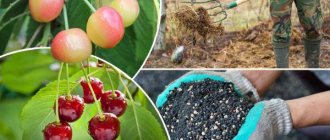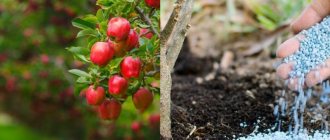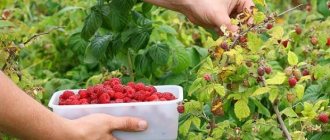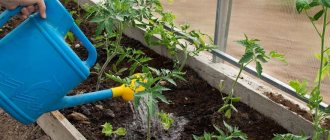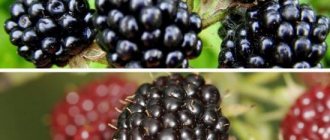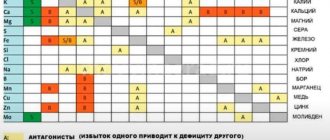Richly fruiting cherries deplete the earth. Microelements necessary for active vegetation and a good harvest are washed away by rain and melt water. Lack of nutrients leads to slow growth. The tree can freeze in winter and get sick. The berry becomes smaller and rarer. The fertile soil layer recovers slowly on its own. Plants can be helped by applying mineral or organic fertilizers in the fall.
Autumn care measures guarantee a good harvest
Caring for cherries in the fall plays an important role.
- Helps the tree recover faster after heavy fruiting.
- Increases next year's yield due to an increase in the number of flower buds.
- Improves berry quality, juiciness and size.
- Strengthens the tree's resistance to various diseases.
- Prevents trunk rot.
- Protects against attacks by rodents and insects.
- Increases the frost resistance of the tree.
Types of fertilizers for stone fruit trees
In order for the tree to be protected from pests, to bloom luxuriantly and bear fruit abundantly, it is necessary to optimally select the composition of fertilizers to feed the cherry in the fall after harvest, in the spring before flowering and in the summer during fruiting.
In the household you can find organic animal matter - manure, chicken droppings. You can replace them with green manure if there are no pets or birds. Lowland silt is suitable, which is not difficult to get from the lake.
Minerals are purchased in stores and distributed in doses around the tree. What to use to feed cherries - complex mixtures or individual substances - is up to you to decide according to the situation. It happens that the choice in stores is small and it is not possible to buy the required composition.
For example, in spring the mixture should contain an equal amount of NPK, in summer there should be less nitrogen, more potassium and phosphorus. Fertilizing cherries in the fall is carried out only with potassium-phosphorus compounds. This determines how the tree will overwinter and whether the buds will freeze.
There is nothing complicated in calculating minerals. You just need to carefully read the instructions and mix the ingredients correctly depending on the time of year and growing season.
Loosening the tree trunk soil
In autumn, fertilizing is carried out using the root method. There is no point in using the foliar option during this period. Because the leaves have already turned yellow and fallen off.
Mineral fertilizers are scattered along the border of the tree trunk circle, immediately digging up the ground. For better absorption, all substances should be dissolved in water. Thus, the soil is quickly saturated with useful elements. The fertilizer is absorbed by the entire network of the root part of the tree.
The diameter of the tree trunk circle also matters; it depends on the size of the crown. As the tree grows, the circle gradually increases in size. To make the calculation correctly, you should measure the span of the crown. Multiply the result by 1.5. This will be the necessary circle that fully provides the plant with nutrition.
During the digging process, you must act carefully so as not to damage large roots, which take a long time to recover. It is not advisable to insert a shovel deep into the ground in the immediate vicinity of the trunk. The depth should not be more than 7-8 cm. It is recommended to use a fork only when working with loose soil.
Important! The roots of the cherry tree are located in the ground a little deeper than 15 cm. It is important, when digging, not to lower the sharp blade of the shovel below this limit.
How can you fertilize cherry trees?
This stone fruit culture is supplemented not only with organic matter, but also with various mineral preparations.
The most effective fertilizers for cherries will be:
- urea;
- superphosphate;
- any potassium salt (except those containing chlorine);
- ammonium nitrate;
- rotted compost;
- green manure;
- wood ash;
- lime;
- dolomite flour.
How to feed cherries during flowering? - video
Important!
In the first couple of seasons after planting cherry seedlings in a permanent place, feeding them is not required - if all the necessary fertilizers were added to the planting holes during planting.
Cherry trees can be fertilized either strictly “at the root” or treated with useful substances “on the leaf”.
Before applying fertilizers, be sure to water the tree trunks of the cherries - up to 30 liters of water are poured under young trees, and up to 60 liters under mature trees. And only after the moisture has been absorbed can fertilizer be applied.
Dry fertilizer is scattered over the entire area of the cherry tree trunk circle and incorporated into the soil with a rake. And with liquid fertilizers you simply water the root zone.
How to water cherries in autumn
For autumn water-recharging irrigation, a large amount of water is used. Moisture should penetrate to the deepest roots.
Final watering is carried out after digging up the soil around the trunk and fertilizing. An adult tree needs at least 15 liters of water. This allows you to moisten the soil to a depth of half a meter. Young plants need 8 liters of clean water. It is very useful to water the cherries with rainwater collected in advance. Many gardeners store rainwater in an open cistern, an old tank dug into the ground. A barrel above an outdoor shower is also an excellent reservoir.
The water temperature for irrigation should be slightly higher than the air temperature at the time of watering. The border of the near-trunk circle is deepened, in the form of a trench, so that the water does not spill. Watering can be done by laying a hose with holes in the trench. Half an hour, an hour of low pressure, will allow the moisture to reach the very roots. This is extremely useful because wet soil does not freeze as quickly. The plant will survive the winter better.
Types of autumn fertilizing for cherries
For cherries, standard types and feeding schemes are used. They differ in the application technique and the means used:
- Root. The mixture is applied strictly at the root, combined with watering. This type includes mineral fertilizers and any organic matter (humus, bird droppings, compost).
- Foliar feeding or spraying. Usually carried out during flowering and after the flowers fall. In the fall, this type of fertilizing is recommended to compensate for iron deficiency. Use iron sulfate (3 tablespoons per 10 liters of water). The procedure is carried out after the first frost.
Top dressing
In the autumn days, gardeners apply fertilizers in such volumes that there is enough food for the whole winter.
Agronomists advise using:
- rotted manure (24-36 months), rotted leaves, chicken droppings (1.5 kg), diluted in 4 liters of water;
- mineral fertilizers with phosphorus and potassium are advised to be buried deep into the roots to ensure good access;
- ready-made, complex collections recommended by scientists for berry gardens.
Important! It is not recommended to use nitrogen additives in the autumn. So as not to prevent the tree from sleeping for the winter. The growth process may begin.
The rate of fertilizing is selected according to the age of the plant.
Trees under 4 years old are given small portions:
- phosphorus-potassium fertilizers – up to 100 g;
- organic – up to 15-20 kg.
A cherry tree that has reached 5 years old is prescribed the following doses:
- phosphorus – 400 g;
- potassium – up to 150 g;
- organic fertilizers - up to 40-50 kg per plant.
An excess of fertilizers reduces the fruitfulness of cherries. Therefore, agronomists advise not to exceed the recommended dosage.
Old-school gardeners prefer to use compost for fertilizing:
- young trees up to 7 years old - 2 kg per 1 m² of trunk circle;
- for older trees - 3 kg.
“Advanced” gardeners are keen on mineral fertilizers.
- The best combination is phosphorus + potassium.
- For non-fruit-bearing trees - 2 tbsp. l. superphosphate and 1 tbsp. l. potassium chloride.
- For fruit-bearing fruits - 3 tbsp. l. superphosphate and 1.5 tbsp. l. potassium chloride.
Trees older than 7 years are fertilized every other year. When choosing the amount and time of fertilizing, you should always take into account the climate, soil composition, and plant health.
Timing for applying autumn fertilizing
Features of the cherry tree are early fruiting, quick end of the growing season, early hibernation. Fertilizing is applied in early autumn. A later procedure will be ineffective, since the nutrients will not have time to be absorbed, and the cherry will already go into a dormant state.
The exact timing depends on the weather conditions of the region. After fruiting is completed, wait 3-4 weeks (time to stop the movement of juices), then apply fertilizer.
The dates vary: from late August for northern regions with short summers to early October for the south. For regions with a temperate climate, the feeding procedure begins in early September and is completed by the 21st-25th.
This is interesting:
How to fertilize cucumbers with mullein.
What types of fertilizers are best to use when planting potatoes.
Feeding calendar by month
| Month | Target | Feeding |
| August | Gradual preparation of the fruit tree for winter begins. | Nitrogen fertilizers are excluded from acceptable fertilizers. In August, azofoska and diammofoska are introduced. |
| September | Fruiting is completely completed. Active preparation of cherries for cold weather. | Emphasis on potassium-phosphorus mixtures. Use potassium monophosphate, superphosphate and analogues. The mixtures are applied under loosening or into holes. |
| October November | Prevention and elimination of garden parasites. | After the first frost, the cherries are sprayed with a urea solution - 500-700 g per 10 liters of water. |
Disease Prevention
Prevention from pests and various diseases in the fall is useful:
- urea treatment;
- removing leaves and weeds that have fallen under the tree;
- treatment of cuts and scratches of the trunk;
- applying garden varnish to pruning areas;
- pruning excess, dried, diseased and broken branches;
- spraying the tree with insect repellent solutions: copper sulfate, cypermethrin, which has a wide spectrum of action.
During the winter months, cherry trees often become infected with fungal diseases. A fungal spore, falling on a plant trunk in the fall, safely survives the winter and quickly multiplies in the spring.
To prevent diseases and insects, in the fall the trunk is cleaned of lichens, exfoliated bark, and green moss. It is convenient to do this with iron brushes with stiff bristles.
After this procedure, fallen leaves, weeds, insect eggs, larvae, cleaning residues are removed and burned. Treat the entire soil around, as well as the tree itself, with fungicides (from rot and fungus).
If trees are slightly infested with insects, it is recommended to spray the plant with folk remedies.
- An ash-soap solution prepared from a bucket of water, up to half a kilo of ash and half a piece of laundry soap.
- A solution of 50 g of birch tar per ten-liter bucket of water.
- A bucket of chamomile infusion made from 1 kg of wildflowers.
If there are too many insects, the plant is sprayed with insecticides:
- "Karbofos";
- "Aktellik";
- "Bankol."
For prevention, the tree is treated with Bordeaux mixture (solution concentration 1%). It is enough to spend 2 liters of solution on a young plant, and up to 10 liters on an adult plant bearing fruit. Immediately after this, the surrounding area is sprayed.
Summer care
In summer, the tree also needs nourishment. Organic fertilizers are used: humus, herbal infusion, compost. Only mature trees are processed: from four years old. At the beginning of June, ammophoska (or its derivatives) is used. To fill 1 m2 of furrow around the tree trunk, 30 g of powder is consumed.
In August, mature trees also need nourishment. Apply fertilizing with phosphates and ash. One and a half liters of working solution of superphosphate (25 g per bucket) and ash mixture (2 cups of ash per bucket) is required per square meter of tree-trunk furrow.
Note! In August, buds are laid for a new harvest, so feeding cherries is extremely necessary.
As soon as the fruits are collected, the cherries need to be fed by foliar feeding - by spraying. Foliar feeding of cherries quickly saturates the tree with essential substances, and also repels pests and strengthens the immune system.
Read also: Describe autumn trees, shrubs, flowers and herbs
In summer, cherries are treated with iron sulfate. The crown and trunk circle (in the projection of the crown) are well moistened with the solution. The treatment is carried out in dry, windless weather so that precipitation does not wash away the solution.
How to treat cherries against pests in the fall
It is known that cypermethrin is included in the following preparations:
- "Cifox";
- "Mustang";
- "Arriro";
- "Inta-Vir".
These drugs are designed to combat insects, which become very numerous by autumn. They move from nearby abandoned gardens and lay eggs to breed for next year.
When preparing the garden for wintering, the trees must be thoroughly inspected, insect nests must be removed, and healthy branches must be sprayed with insecticides. Carefully cut off the affected branches and burn them so that the eggs do not fall to the ground and remain there until spring.
Preparing cherry tree trunks for winter
Cherries in the fall need deep digging of the soil. However, do not overdo it - there is no need to dig deeper than 15 cm, because the roots of cherry bushes are located just below this level, and they are very easy to damage. The diameter of the loosening should correspond to the crown of the tree.
After loosening, conduct a final watering of the cherries so that the moisture penetrates deep into the roots. To do this, you will need to pour at least fifteen liters of water under each adult tree, and eight liters will be enough for young seedlings.
Insulation and shelter for the winter
In winter, young trees are threatened by squally winds, precipitation, and severe frosts. This can damage the crown, slow down the movement of sap and the growth of shoots. Ultimately reduce yields. Rodents love to eat tree bark.
Therefore, young trees should be covered in autumn to prevent branches from breaking. And whitewash the lower part of the trunks.
Experienced gardeners these days wrap plastic mesh around trunks and lower branches. It prevents rodents from damaging the bark and also insulates the plant. If there is shelter, a fence, a picket fence next to the tree, that’s also good. The young plant is tied to a support to help withstand winds. The crown is covered with burlap, old newspapers, wrapped with twine and topped with spruce branches. This is how the trunks of plants under 4 years old are insulated.
For the winter, the base of the trunk is dug in with loose soil, mulch, and covered with spruce branches to a depth of 30-40 cm. The mulch is poured so that it is not too close to the trunk. Otherwise, in the spring and during the thaw, the bark becomes warm and rotting begins.
Hay, bark, straw, humus, and peat are used as mulch. This layer will protect the roots from diseases, pests, frost, and slow down the growth of weeds. Among other things, it is an additional organic fertilizer and reduces the need for frequent loosening.
Inorganic preparations and fertilizers for cherries
To obtain the best results in cherry fruiting, you should combine natural fertilizers and special mineral complexes.
Urea for cherries in spring and autumn
This preparation contains a large amount of nitrogen (up to 45%), so it is actively used in the spring to help plants quickly increase their vegetative mass. When urea and potassium salt are simultaneously added to the soil, cherries immediately receive all the nutrients necessary for growth.
But urea also helps trees successfully fight fungal mold - coccomycosis. To do this, the entire above-ground part of cherry trees is treated with a urea solution before the onset of cold weather.
Superphosphate for fertilizing cherries
Approximately half of this preparation consists of phosphorus and its compounds, which are indispensable for the active development and growth of the root system of plants, as well as cherry seedlings. Phosphorus also improves the taste of ripening fruits and accelerates their ripening.
If cherry trees lack this microelement, then a yellow heel with a purple tint appears on their foliage.
Important!
Superphosphate cannot be added to the soil at the same time as urea, chalk or saltpeter. At least 6-8 days should pass between the addition of these drugs.
Ammonium nitrate for fertilizing cherries
This drug can be applied to the soil instead of urea, since the percentage of nitrogen in them is approximately the same. Therefore, this substance can also be applied to cherry trees during the spring.
Important!
The time for the first feeding of cherries in the spring is the end of March or the beginning of April, until the buds of the trees begin to swell and bloom.
Urea or ammonium nitrate are suitable as effective root dressings at this time.
How to feed cherries in spring:
- preparations must be applied liquid to the tree trunk circle, therefore, before applying to the soil, they are diluted according to the instructions for use;
- A circular groove is made around the cherry tree, into which up to 30 liters of water are added;
- After the moisture has been completely absorbed into the soil, diluted fertilizer can be applied.
Important!
Before the leaves bloom on the cherry trees, it is useless to carry out foliar fertilizing with any fertilizers.
When the buds are blooming on the cherry trees, the following fertilizing should be applied. In this case, pure nitrogen fertilizers can do more harm than good to this stone fruit crop.
Whitewashing trees
Powerful trunks of mature trees are whitened. A layer of whitewash protects not only from rodents, but also from the too bright rays of the winter sun. Sometimes copper sulfate is added to lime. This repels rodents even more. It is more convenient to whitewash after the rainy season, so the layer of lime will remain on the trunk longer.
The trunks of young trees are also whitewashed, partially reaching the lower branches.
Interesting: How to dilute lime for whitewashing trees
Fertilizers by season
In spring, nitrogen must be supplied to the soil in order for trees to grow foliage. Fertilizers for cherries are applied by the root method, since in the spring there are still few leaves, and the tree will not be able to absorb the substances. Before the juices begin to flow, organic matter or minerals are added in full. Minerals are scattered in the area around the tree trunk and dug in to prevent nitrogen loss.
The organic matter is decomposed and also dug up with the soil. If there was a lot of snow, it means the soil is wet and soil bacteria will immediately begin to process the substances. Otherwise, it is necessary to water the soil so that food gets to the roots.
The first fertilizer is enough until flowering. Fertilizing cherries after flowering should contain more potassium and phosphorus, since these substances are responsible for the number of fruits and their taste. At this stage, the gardener’s task is to influence the safety of the ovaries and their growth. Taste qualities depend not only on the presence of nutrients in the soil. The variety also influences: there are sour varieties, sweet varieties and hybrids of cherries and cherries.
How to feed cherries with folk remedies in the summer:
If the tree is large, then you need two to three times more ash, then dilute it with water. Before application, the soil is watered abundantly. Next, a hollow is dug along the tree trunk and the ash solution is poured into the ground, the depression is covered with a layer of soil.
- humus to the soil rather than just leave it on the surface. If you mulch the fertilizer with straw and water it, then loss of nutrients can be avoided.
Mineral substances used include potassium sulfate and superphosphate: regular or double. About 50 g of superphosphate and 40 g of potassium are needed per square meter. The substances are dissolved in water and the soil is watered.
In summer, it is necessary to inspect trees for pests. If they are, you can make a solution of urea or copper sulfate and spray the garden. Copper is responsible for plant immunity. Use according to instructions using personal protective equipment.
Features of preparation for cold weather by region
When carrying out preparations for winter, it is important to take into account the climatic characteristics of the cherry growing area. In the Moscow region and central Russia, a standard scheme has been developed for this.
Fruit trees growing in Siberia, the Urals, the Leningrad region and the Far East require more serious care and adapted varieties.
- The cherry tree must be insulated. Particular care must be taken to cover young plants, because they tolerate frost less well.
- Pruning in these areas is done immediately after the leaves fall. They are trying to meet the deadline until mid-September. Wounds on branches after pruning should have time to heal. Later, there are low temperatures here, because of which the seedlings may die and the adult tree may be seriously damaged.
- In a cold region, it is important to cover not only the trunk of plants, but also the buds; In bush cherries, bent branches must be completely covered with snow, spruce branches, straw or peat, rags, and non-woven materials.
Autumn care
In autumn, fruit trees are prepared for winter frosts by supplying them with complex fertilizers. However, nitrogen should not be present in fertilizers, since this microelement enhances greening.
Autumn work begins immediately after the leaves fall and branches are pruned. The tree trunk circle is carefully protected from debris, and the soil is dug up deeply. After digging, fertilizer is applied.
Note! In the fall, digging is done with a pitchfork rather than a shovel. Dug up soil freezes less than compacted soil.
In autumn, it is best to apply mixed organic-chemical fertilizers:
- kuryak solution;
- compost;
- humus;
- sawdust;
- lime;
- ash;
- chalk.
Chalk is added if the tree is in dire need of iron.
Cherries are lovers of alkaline soil, so gardeners periodically lim the soil around the trunk.
Autumn preparation is also necessary for young two-year-old trees. Seedlings are fed with superphosphate (up to 60 g per square meter of trunk furrow) and an aqueous mixture of potassium sulfate (25 g of agrochemical dissolved in a bucket). Organic fertilizers (compost or humus) are applied every three years: 4-5 kg of mass is consumed per square meter of tree-trunk furrow.
Fallen leaves must be burned: they may harbor pests.
Trees from four to seven years old must be sprayed with a urea solution after the first frost. This will provide them with an easy winter. For the mixture, take 25 g of urea per bucket. For root feeding, use 310 g of superphosphate (if you use double superphosphate, the volume is halved). In addition to superphosphate, cherries are fed with an ash solution (it is enough to dilute one glass of wood ash in a bucket). Once every three years, cherries need humus or compost (up to 40 kg of organic matter is placed in the trunk circle).
Old trees (after 7 years) are also sprayed with urea solution after frost. Root feeding is carried out by adding a superphosphate solution in a volume of 0.5 kg per tree. Cherries also need potassium complexes (potassium sulfate or potassium chloride). Humus/compost is added once every three years in a volume of 50 kg per tree.
Autumn care allows trees to overwinter without problems and quickly awaken in the spring. Fertilizing also protects cherries from fungal diseases and attacks by insect pests. Experienced gardeners whiten trunks in the fall to prevent pests from settling under the bark for the winter.
Autumn pruning
Trimming excess, diseased, and dried branches increases the yield and quality of berries. The cherries become large and fleshy.
Removing overgrowth
If a cherry tree is not cared for for a long time or not at all, shoots form around the mother trunk. It takes nutrients from the main plant and blocks the light. The berries become smaller, the yield is lower.
https://www.youtube.com/watch?v=DJ-2UWhpVr0
In the southern regions of the country, where there are rich black soils, by autumn shoots emerge from the ground around each tree. It forms entire thickets, drawing moisture and nutrients from the soil. That's why we have to fight it.
- At the base of the shoot emerging from the soil, you need to dig a hole and cut off the shoot with a sharp knife.
- The shoot must be cut off from the root of the main tree without damaging the main root.
- Fill the cut area with garden varnish and cover the hole with earth.
- After removing excess shoots, stumps should not be left, because new shoots will soon grow on them.
Features and trimming time
If the cherry variety is prone to neglect and excessive dense growth, experienced gardeners carry out formative pruning. In young plants, cut off the top of the crown. When forming the crown, 7-12 skeletal branches are left.
In the fall, it is recommended to remove weak, dry, diseased crowns that grow inward and create shadows from mature trees. Annual, healthy shoots are not shortened. Young, strong branches are left 1.5-2 meters long.
Sanitary pruning is carried out after leaf fall. At this time, diseased and dry branches are removed. After this, debris is removed under the tree, leaves and weeds are removed so that mold spores and insect eggs do not remain in the soil. Spraying the soil and branches will be very helpful.
Types of fertilizers used to feed cherries. In what cases is each fertilizer used?
There are different types of fertilizers that are suitable for feeding cherry trees of different ages and conditions. Let's look at the most famous ones.
Mineral fertilizers
These include all types of potassium, phosphorus and complex fertilizers. It is fertilizers containing potassium and phosphorus that are recommended to be used in the fall. Nitrogen fertilizers are not suitable for autumn feeding, as they stimulate the growth of above-ground parts and greenery, and this is not necessary in the fall.
Mineral fertilizers based on potassium help the tree to better withstand winter and help withstand frost, wind and snow. In addition, potassium in the fertilizer negatively affects fungal spores and prevents the development of diseases of this kind.
Potassium sulfate or potassium sulfate is the most popular concentrated fertilizer. To feed a cherry tree, it is enough to dilute 25-30 grams of water per square meter of land in a large bucket.
On days when it rains a lot, potassium is greatly washed out of the soil. Therefore, it is recommended to increase its content and add additional fertilizers.
It is acceptable to use fertilizers containing potassium and magnesium, potassium and chlorine (potassium chloride) . You should not be afraid of chlorine; during the period of autumn rains, winter and spring melting of snow, chlorine is washed out of the soil and does not cause harm. The main thing is to take into account that such fertilizers are not used in the summer; they can harm the tree in which there is active sap flow.
Grateful Tree
The tree responds to careful care with great gratitude. A rich harvest - up to 20 kg per tree, gardeners harvest every summer. Housewives tirelessly prepare for the winter. They prepare traditional summer dishes, about which they rightly say: “You will lick your fingers!”
Compotes for the winter, dumplings, cakes and pies with cherries, jam with pits. Canned pitted cherries in their juice are great for pies and jelly in winter. It would take a long time to list the delicious dishes made from this healthy berry, rich in vitamin C. This berry decorates the table of a good housewife all year round. A good harvest will be ensured by timely care of the tree.
Ready-made fertilizers for trees and shrubs
Today, specialized stores sell special mixtures that contain all the fertilizers necessary for plants. It is very convenient to use them, since you do not need to buy a separate fertilizer and calculate its dose. Complex fertilizers are used according to the instructions supplied with them.
You will be interested to know: Wood ash for feeding home seedlings: when and how to feed correctly
Fruit-bearing trees and shrubs in the fall can be fed with Kemira, Universal, Fruit Garden or Autumn fertilizer.
You can reap a good harvest only if you take care of the nutrition of bushes and trees, which need feeding not only in spring, but also in autumn.
